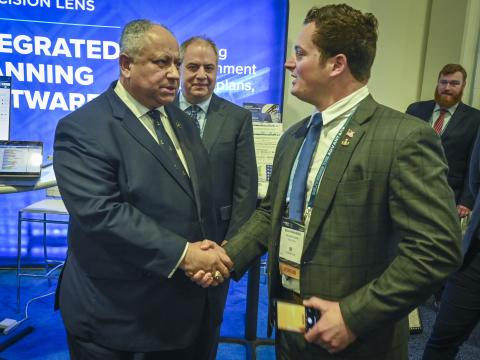Top Information Technology Officials Peer into the Future
Top information technology officials from a variety of government agencies identified cloud computing, mobile devices and edge technologies as the technologies that will be critical for accomplishing their missions in the future.
Luke McCormack, chief information officer, Justice Department, cited cloud-as-a-service as vital to the future. He urged industry to continue to push the barriers of stack computing, and he mentioned edge technology as an emerging technology. “Edge is going to be really critical to perform missions,” he said. He cited the Google Glass project as an indicator of what the future will bring.
Mobility could be the future of training and simulation, suggested Sandy Peavy, chief information officer for the Federal Law Enforcement Training Center within the Department of Homeland Security (DHS). She revealed that her office is putting together a pilot program introducing tablet computers into the training environment, and ideally, she would like trainees to be able to access simulation on the mobile device of their choice. Peavy also reported that the Bureau of Alcohol, Tobacco, Firearms and Explosives is providing special agents with iPhones and experimenting with other devices. “If I’m going to be able to provide just-in-time training, then mobile technology is the key.”
Richard Spires, chief information officer for the Department of Homeland Security, also cited mobility as a key future trend, but he also brought up metadata tagging, saying that it helps to understand the data itself and to establish rules for who sees what information. Metadata tagging is especially important as the department grapples with privacy concerns.
Rob Mancini, chief technology officer for the District of Columbia, stressed the importance of data governance. “We can talk about cloud all we want, and we do use some of that technology, but we always have to focus on what data we’re talking about and how to capture, protect or correlate that data.” He explained that his office works with various kinds of data, much of which involves personal information. “When folks want to take that to the cloud, we have to know what that data is, what form it is in, when it’s at rest versus being transmitted, how we get at that data, and who is overseeing and sharing that data.”



